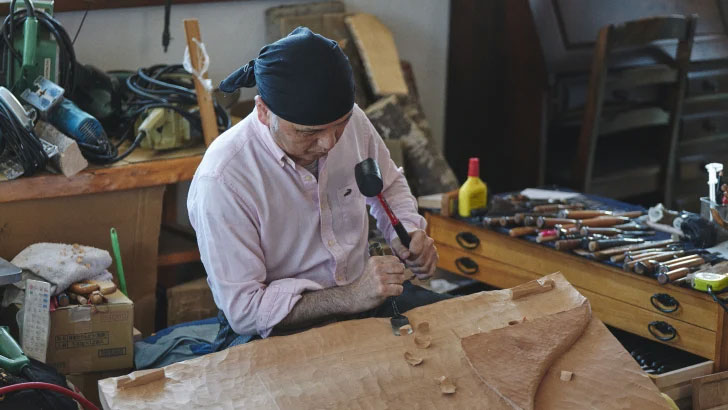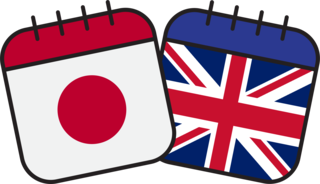
DEMONSTRATION Ainu Woodcarving by Kaizawa Tōrubunn
- 11 December 2023
- 18:30-19:30
- The Hall, Japan House London, 101-111 Kensington High Street, London, W8 5SA
- https://www.japanhouselondon.uk/whats-on/2023/ainu-woodcarving-by-kaizawa-toru/
- +44 (0)20 7932 7100
- info@japanhouselondon.uk
- Tweet
Discover the techniques and characteristics of Ainu woodcarving in Nibutani with a special demonstration by renowned Ainu artist and master woodcarver Kaizawa Tōru.
Ainu woodcarving has its own unique roots and encompasses a remarkable abundance of creativity. In the community of Nibutani, located within Biratori, Hokkaido, the production of carved wooden plates or trays called Nibutani ita has been named an ‘Official Designated Traditional Craft’, one of only two in Hokkaido. Once used for serving food, Nibutani ita are carved from walnut or katsura (Cercidiphyllum japonicum) wood with Ainu patterns such as morew (gentle spirals), aynus (thorns) sik (eye shapes) and ram-ram (fish scales). These decorations can also be seen on the surface of small double-edged multi-purpose knives known as makiri.
During the demonstration, Kaizawa Tōru, whose work can also be seen in the British Museum, introduces the process of carving Nibutani ita and makiri, demonstrating both his mastery of time-honoured techniques and his creativity and personal style.
During the event Kaizawa is joined in conversation by Professor Katō Hirofumi, Professor of Archaeology at the Centre for Ainu & Indigenous Studies, Hokkaido University.
The demonstration is a part of a programme of events connected with the exhibition Ainu Stories: Contemporary Lives by the Saru River. Visitors to the exhibition can see a range of Ainu decorative woodcarving including Nibutani ita and a new specially commissioned work by Kaizawa Tōru called 'Identity 2023 Iron Will'.
Please note that filming and / or photography may take place at this event. Photos and footage of the event may then be used to promote Japan House London, helping more people to discover what we offer. If you have any concerns, please email info@japanhouselondon.uk or contact a member of the team on site.
About the performers
Kaizawa Tōru
Born in Nibutani in 1958, Kaizawa Tōru grew up in the company of his craftsman father (Tsutomu) and fellow artisans. His great-grandfather, Kaizawa Utorentoku was one of two Ainu artisans renowned for their skill in the Meiji Era. While valuing traditions inherited from his great-grandfather, he combines them with his unique sensibility and techniques, energetically grappling with the creation of original Ainu art that expresses his own personality and message. He has won many prizes, including the Hokkaido Governor's Award at the Hokkaido Ainu Traditional Craft Exhibition. He is the owner of the workshop Kita no Kobo Tsutomu.
Katō Hirofumi
Born in Yūbari, Hokkaido, Katō Hirofumi completed his doctoral degree at the University of Tsukuba's Graduate School of History and Anthropology in 1996. After working at the Graduate School of Area Studies, University of Tsukuba, and the Institute for Northeast Asian Research, Shimane University, he began teaching archaeology at Hokkaido University in 2001, becoming a Professor of Archaeology at the Centre for Ainu and Indigenous Studies, Hokkaido University in October 2010. In April 2020 he was appointed as Director of the Centre.
Admission Free | Booking Essential
